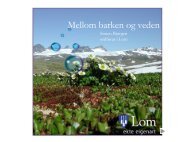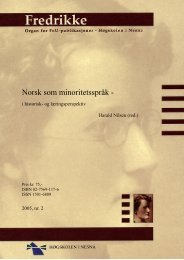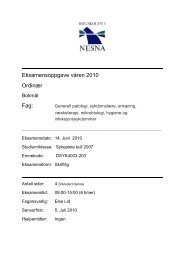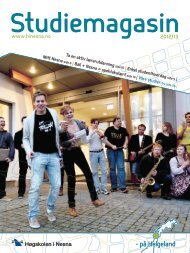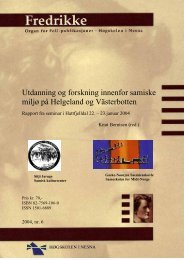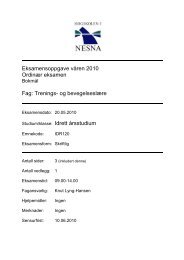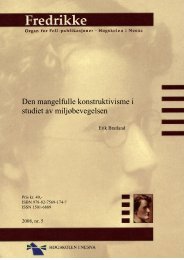ikt-basert norskundervisning i utlandet - Høgskolen i Nesna
ikt-basert norskundervisning i utlandet - Høgskolen i Nesna
ikt-basert norskundervisning i utlandet - Høgskolen i Nesna
Create successful ePaper yourself
Turn your PDF publications into a flip-book with our unique Google optimized e-Paper software.
40<br />
However, if they help to increase students' motivation, willingness to learn and linguistic<br />
consciousness a great job is done.<br />
Hot Potatoes-software is free to use provided that one publishes the exercises one has created,<br />
on the internet free-of-charge.<br />
TROLLORD, or What Is the Difference between a Casserole and Hashish<br />
No one will deny that the value and importance of bilingual target language < – > native<br />
language dictionaries is huge. There can occur many misunderstandings and annoying<br />
blunders if one uses a third language as an “intermediary” translating between one's native<br />
language and the language one is studying. When I was a student myself (and this was not<br />
that long time ago), there were no Norwegian-Lithuanian or Lithuanian-Norwegian<br />
dictionaries at all. Therefore we had to use Norwegian-English-Norwegian, Norwegian-<br />
German-Norwegian or Norwegian-Russian-Norwegian dictionaries. Once I needed to find out<br />
what “a casserole” (or “a pot”) was called in Norwegian. Just imagine my surprise when the<br />
dictionary offered variants as “marihuana” and “hasjisj” which, of course, were long away<br />
from what I needed, namely the innocent Norwegian words like “gryte”, “kjele”, “potte”, or<br />
“kasserolle”.<br />
This is a rather humoristic example, but in some cases it may go totally wrong if one uses an<br />
intermediary language where words have several different meanings…<br />
Therefore we decided to use some of the money from the purse of the ICT-project to buy<br />
license of a dictionary-application and to create a Norwegian-Lithuanian dictionary.<br />
From a shy idea, this has become a highly ambitious sub-project.<br />
At the moment, the program, called “Trollord v. 1”, contains two dictionaries: a Lithuanian-<br />
Norwegian one (over 3000 words) and a much bigger one, Norwegian-Lithuanian (over 15<br />
600 words).<br />
The Norwegian-Lithuanian dictionary covers not only the basic words which are most<br />
commonly used in the textbooks and everyday-language, but also literary, linguistic, medical,<br />
biological and computer-related terms, plus words most often used in modern Norwegian<br />
newspapers.<br />
Here is a screenshot illustrating both “brand-new” and more “classical” expressions with the<br />
word “revolusjon ~en”:<br />
Fredrikke nr. 11, 2005<br />
Organ for FoU-publikasjoner – <strong>Høgskolen</strong> i <strong>Nesna</strong>



